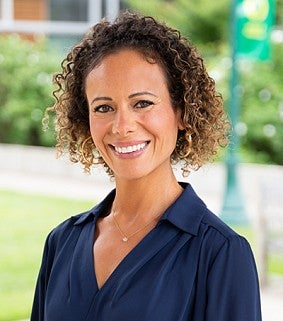Study Reveals Innovative Approach to Enhance School Culture, Potentially Replacing Suspensions
A new approach to classroom behavior that avoids suspensions and expulsions could be the latest tool for helping youngsters avoid a whole list of short- and long-term problems, including drug abuse.
Pioneered by associate professor Rhonda Nese and her team in the University of Oregon’s College of Education, the new approach is an alternative to what is known as exclusionary discipline, which includes removing students from classrooms and schools. Nese and her team recently received a $3.7 million grant from the National Institutes of Health to test the model, known as the Inclusive Skill-building Learning Approach, in 60 middle schools across six states.
The grant project will evaluate the effectiveness of the model on improving both education access and quality and the social and community environment to prevent school exclusion and substance misuse.

The goals of the skill-building approach are to make the relationship between students and teachers better by improving the way teachers and administrators interact with students and to provide equitable methods of improving students’ social and behavioral problem-solving. Nese said that approach leads to improved student behavior and reduces the need to exclude students from the classroom or school.
“We’re moving away from the holding cell mentality of in-school suspensions where you just sit in a room and do nothing,” she said. “That’s not a teaching strategy, it does not lead to improvements in children’s behaviors or academic performance, and in fact it only makes things worse.”
Nese said decades of research has shown that exclusionary discipline “is inextricably linked to substance abuse, incarceration, academic failure, trouble with employment and lots of horrible predictors for kids.”
The new approach “creates environments that are inclusive, supportive and built on the idea that we only succeed as a class when all of us succeed,” she said.
The Inclusive Skill-building Learning Approach trains not only teachers but also office staff, counselors and administrators in ways to help middle school students feel welcome and supported, resolve problems and avoid conflict. It includes strategies that are as simple as teachers greeting students individually at the classroom door and setting clear expectations for classroom behavior. Other strategies include de-escalation techniques and practice making amends.
Cognizant of the considerable workload most teachers already grapple with, Nese said the skill-building approach is designed to braid with things teachers already are doing.
“Greeting students as they come into your classroom isn’t a new thing,” she said. “It’s about doing it thoughtfully and systematically because it’s actually been associated with an increase in classroom engagement and decreases in disruptive behavior. And it’s preventative, meaningful, and takes little to no prep.”
Another feature of the program is training the school’s whole staff, so teachers have backup and support when they need to take a step back from a difficult situation. Everyone from front-office staff to top administrators get trained, providing more ways for students to get help.
Nese and her team are working with co-investigators Joe Nese and John Seeley from the UO’s College of Education, as well as Ambra Green at the University of Texas at Arlington, Tamika La Salle-Finley at Georgia State University, and Sara McDaniel at the University of Alabama.
In addition to testing the new approach in middle schools in Oregon, Texas, Georgia and Alabama, schools in California and Hawaii also are participating. The team also has the support of an expert advisory panel, made up of scholars from the UO’s Prevention Science Institute, Yale School of Public Health, Johns Hopkins University and the University of Cincinnati.
The development of the approach was initially funded with a $1.4 million grant from the Institute of Education Sciences. The new NIH grant will now allow the approach to be tested on a variety of indicators of student success and student risk, such as student engagement, inclusive teaching practices, racial and ethnic disparities in school discipline, and opioid and other substance misuse.
If the data collected over five years produces positive results, training materials will be offered to schools around the country and the world for free.
“Tax dollars are what funds our research,” she said. “So we give all our materials back to our public education systems because this is how we can positively impact the most students.”

